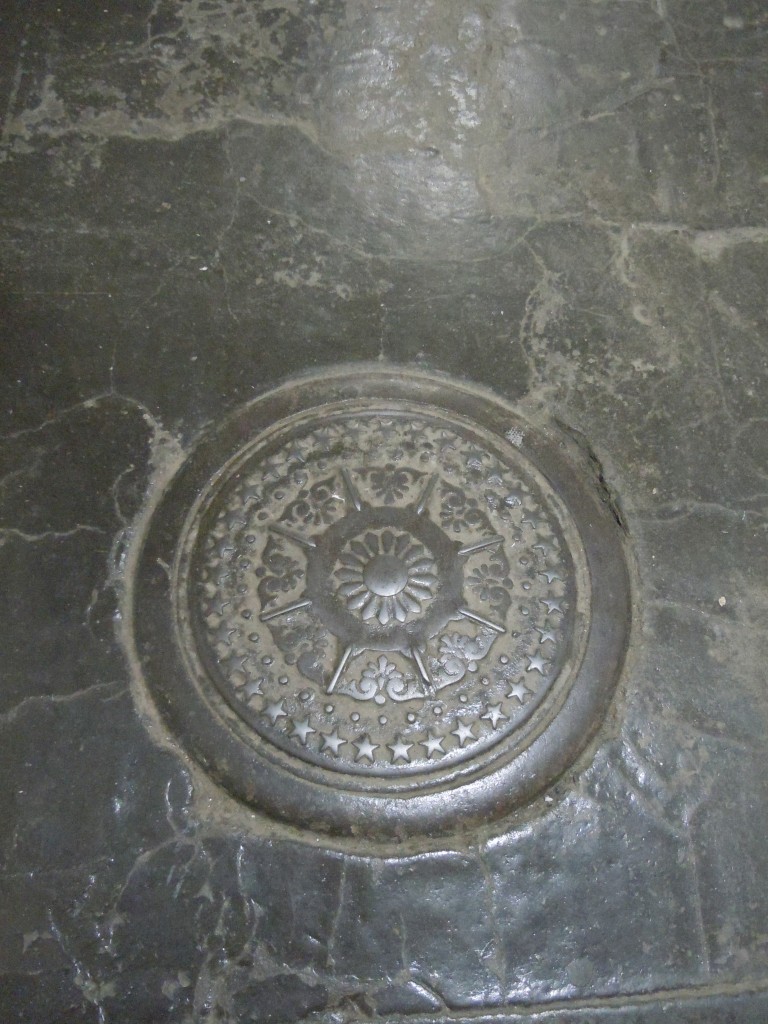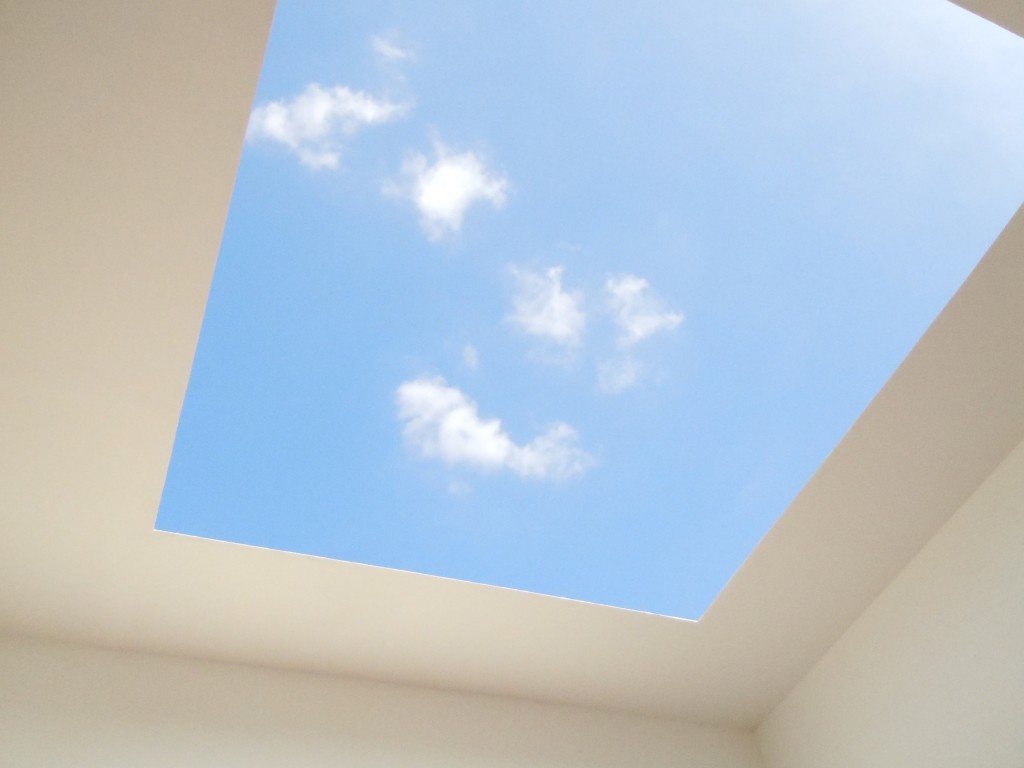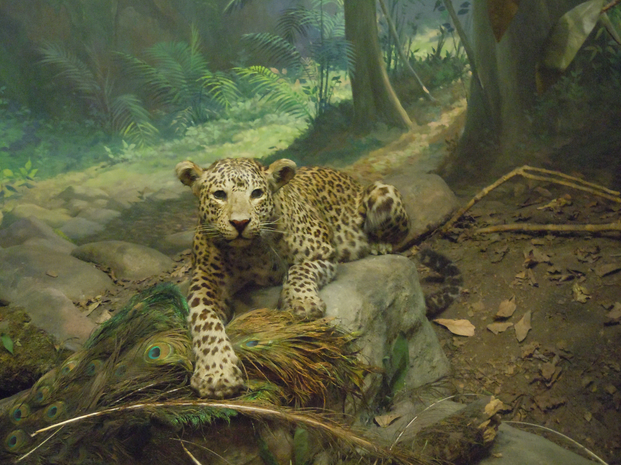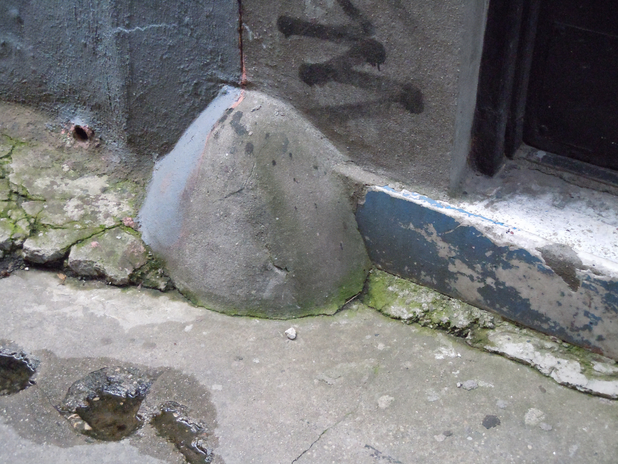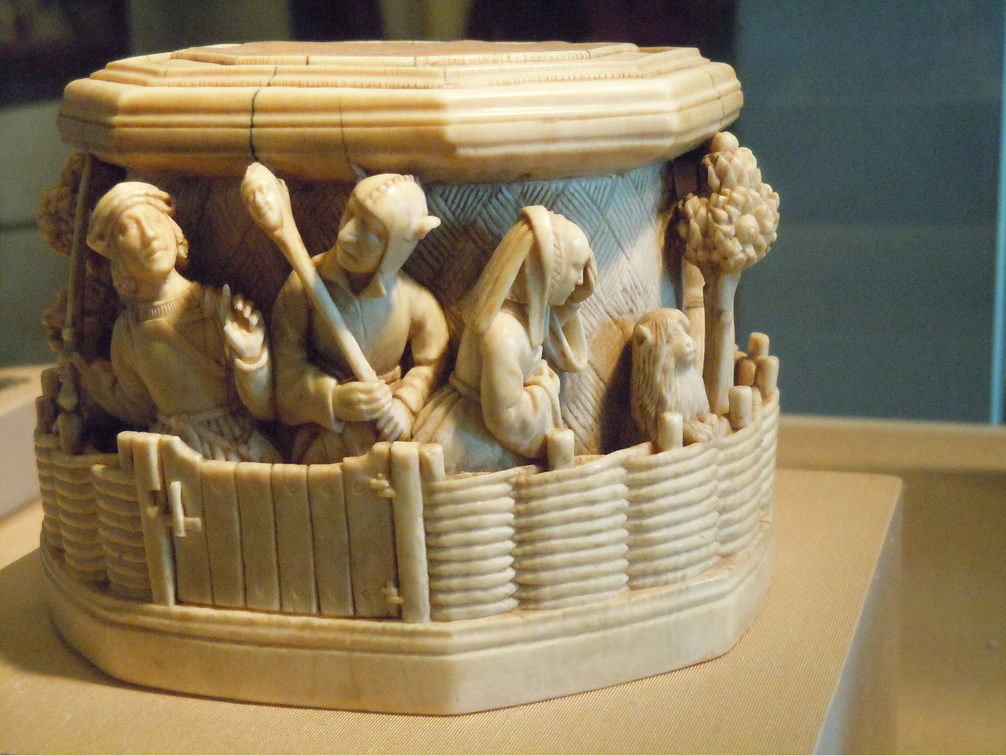Friday July 28th, Phoenix Poetry Series presents their newest zine launch titled Unsellable Inventories. Editor Kat Hofland showcases emotions, experiences, thoughts, beliefs, and more through the power of lists. There will be readings throughout the evening, featuring an array of local writers, Tucson writers, and a few from far-away places. The event will be at Fillmore Coffee Co from 6 to 8 p.m. Click here for the Facebook event.  , Li
, Li
Arizona
#ArtLitPhx: Edith Wharton: When Words First Spoke
Explore the life of renowned Pulitzer Prize-winning American novelist Edith Wharton. Dr. Rivers-Norton will discuss excerpts from “Edith Wharton: When Words First Spoke,” the fourth chapter of her latest book The Demeter-Persephone Myth as Writing Ritual in the Lives of Literary Women. The talk will focus on the novelist Edith Wharton, who experiences loss, illness and confusion as a child and is mystified by the aloofness of her mother. Consequently, she feels insecure and inferior. Although destined to be a writer, Wharton is profoundly shaped by family discord and a war-torn world, and often courts humiliation and consequent exile by voicing what others in her family do not want to acknowledge. Despite these restrictions, Wharton continuously recasts painful experience as fodder for the imagination to forge a lasting literary career.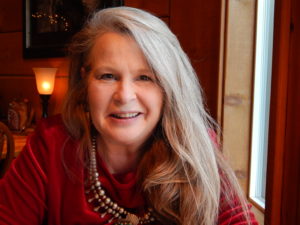
This free event will be on Thursday, June 8 from 6:00 PM to 8:00 PM. Located at Arizona Humanities 1242 N. Central Ave. Phoenix, AZ 85004. For more information and to RSVP click here.
#ArtLitPhx: Prisoners Without Chains with Jerry Garcia
Senior lecturer of ethnic studies at NAU, Dr. Jerry Garcia, will be holding an author’s talk titled “Prisoners Without Chains: The Forced Relocation of Japanese Mexicans 1942-1945” on Tuesday, May 16th. The free event features a small group discussion (limited to 12 RSVPs) from 5:30 PM to 6:30 PM. Afterwards, from 6:45 PM to 8:30 PM there will be a presentation and Q&A. The event will be held at Arizona Humanities, located at 1242 N Central Ave Phoenix, AZ 85004. Light refreshments will be served. For more information and to RSVP to the event click here.
Explore the Japanese Mexican experience during World War II and learn how it was markedly different than the Japanese American experience in the United States. Dr. Jerry Garcia from Northern Arizona University shares how the Japanese negotiated a distinct space within Mexican culture where Japanese identity and ethnicity was maintained and rarely challenged due to a perception that the Japanese displayed markers of whiteness that were associated with western imperialism and power. Examine how the Japanese adjusted during turbulent and transformative periods in Mexican history and the over-arching policies of the U.S. regarding Japanese immigration throughout the Americas.
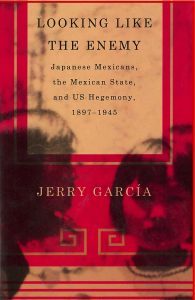 Dr. Garcia’s new book Looking Like the Enemy: Japanese Mexicans, the Mexican State, and US Hegemony, 1897-1945 examines Japanese immigrants in Mexico and the United States during World War II. The book focuses on the experiences of the Japanese on both sides of the borders and the similarities and differences in their treatment. You can purchase the book through University of Arizona Press here and use discount code AZHUM17 for a special offer.
Dr. Garcia’s new book Looking Like the Enemy: Japanese Mexicans, the Mexican State, and US Hegemony, 1897-1945 examines Japanese immigrants in Mexico and the United States during World War II. The book focuses on the experiences of the Japanese on both sides of the borders and the similarities and differences in their treatment. You can purchase the book through University of Arizona Press here and use discount code AZHUM17 for a special offer.
Dr. Garcia received his doctorate from Washington State University and was the former Director of the Chicano Education Program and the College Assistance Migrant Program at Eastern Washington University. He is now the Senior Lecturer for Ethnic studies at Northern Arizona University. His research focuses on Chicano History, Latin American History, History of Mexico, Asians in the Americas, immigration, empire, masculinity, and race in the Americas.
#ArtLitPhx: An Evening of Nerdy Poetry, Featuring The Klute
On Thursday May 18 from 7-9PM, District 4 will be hosting An Evening of Nerdy Poetry, Featuring the nationally touring slam poet, The Klute. Get a head start on Phoenix Comic-con with poems themed with sci-fi, comics, video games, and more. Learn about nerd poetry history, including the Secret Nerd Poet Council upcoming at this year’s Phoenix Comic-con.
There will be a poetry reading and coffee and snacks will be available for purchase. You could also win your very own sonic screwdriver during the trivia contest.
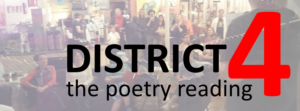 District 4 meets on the third Thursday of each month at Jarrod’s Coffee, Tea and Gallery at 154 W Main St, Mesa, AZ 85201. More information can be found on the Facebook event here.
District 4 meets on the third Thursday of each month at Jarrod’s Coffee, Tea and Gallery at 154 W Main St, Mesa, AZ 85201. More information can be found on the Facebook event here.
Interview with Marlena Robbins: On Process, Painting and Spirituality
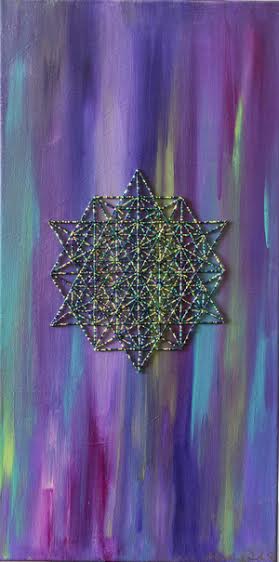
Arizona-raised artist Marlena Robbins is known for her tactile, self-reflexive painting style and use of color and symbolism. Our Art Editor, Regan Henley was lucky enough to ask her a few questions on her work, style and process.
Regan Henley: You’ve said you haven’t been painting for very long, but you seem to spend a lot of time dedicated to it. Is painting your primary medium? Why or why not?
Marlena Robbins: Yes, painting is my primary medium. I use it more so as a therapeutic expressive outlet. I think the brush strokes and colors help me feel my reality. The simple act of the brush strokes help settle my mind, focus and zone into my present. The colors are psychological; reds are passionate; blues and greens are calming; white is pure, black is powerful; etc. I started painting about 3 years ago; it evolved from there and became my own form of therapy. It became a way for me make sense of my reality, my experiences and what I was going through in order to bring me back to the present.
RH: You’ve collected a very interesting group of pieces. What would you say is the overarching theme in this body of work?
MR: I don’t know that there is a theme to it all; I think each piece that I do reflects what I am experiencing at that particular time in my life. If I’m learning something new. For example, a lot of my earlier pieces were political because I was taking an American Indian Studies course; so whatever I was taking in through my course was being reflected through my paintings. Other paintings were an extension of my feelings, thoughts and circumstances of the moment. What I am trying to understand about my reality. My paintings are growing right along with me; they are a reflection of me and the times that I am in right now.
RH: What is your process for creating these works? Do you begin with concepts or images?
MR: I have the concept first; for example when I say that I am painting what I am experiencing and what I am trying to understand about my life, that’s the concept. That’s me thinking about what I am going through right now in order to create. For instance, we recently had a lot of loss in our family and to try to make sense of that all the only way I could was to paint about it and try to bring closure in order to move forward.
Another important concept to me is balance: balancing myself spiritually, mentally, emotionally, physically and how I represent that in my art. Making sense of balance is a lifelong journey; to sustain, nurture and accept that it is a part of who we are as individuals, as human beings. It is very much a part of our purpose.
The concepts definitely do come first, but I take images from my surroundings, the environment and my creative environment. I am very blessed to know and work with amazing artists and have great mentors who put it all out there to be respected and to inspire the people to create.
Some paintings I do start out with a plan, I sketch it first. However, lately, I’ve been mostly experimenting with the mixtures of colors; being intuitive with it and going with the flow. Not really having a plan but giving the canvas my all and the paints their own direction and free will. It’s intimidating to not know what is going to happen or how it’s going to come out because I have this canvas in front of me and I don’t want to mess it up, but at the same time there’s beauty in the unknown. I believe that is parallel with life.
RH: You’ve mentioned that many people are drawn to the three-dimensional quality of your work. Do you ever work with collage or 3D materials when creating these paintings? Your paintings have a kind of texture and warmth that makes them read like textile and fiber arts. How are you influenced by textile arts when creating these pieces?
MR: My very first collage piece was done to pay homage to the women, grandmothers and mothers who came before us. It was pictures of Indigenous women and their children from the late 1800s to mid-1900s. It shows the love that we have for our children as mothers and how that is gifted from generation to generation; the connection we must maintain and nourish with our children. There is no perfect parent; we do our best with what we have.
When I was finished with it I felt as though something was missing. I saw the beads next to me and started beading the outfits in the pictures. My very first collage was my very first beaded painting. The beads add to it, they are unique, different, offer a new texture/effect and are beautiful because it’s like painting with beads. There are very few artists that I’ve seen who bead their paintings. I haven’t seen much on it or read much about it; I know that it is out there, it’s just very unique. I first started beading about 7 years ago; my auntie taught me a very simple stitch. I stopped beading for a long time and it came to back to me when it was supposed to.
RH: Many of these paintings reference spirituality in an abstract way, from the use of patterns, stained glass and geometry; they definitely evoke these thoughts to me, personally. Can you speak a little bit more to that (Are you directly interested in these ideas or are they themes that come up naturally? Are you a very spiritual person? Etc.)?
MR: Spirituality, to me, is an intricate and delicate thought process but very simple to appreciate. It’s not overruled by any written agenda or book. It’s not confined entirely to a religion. It’s how we cope with our reality, how we understand and see ourselves, see the people around us and the world we are in.
I grew up in Window Rock, AZ on the Navajo reservation. Our family didn’t lean towards any religion. There were a lot of traditional Navajo families and Catholic/Mormon families around us. Our mother chose not to excessively influence any one form of religion, she let us understand it for ourselves, and I really appreciated that because it was less confusing. I am not too traditional but I am not religious either. I understand both because I witnessed both. It’s hard for me to respect any Christian religion as a legitimate source of spirituality based on colonialism and the fact that it wasn’t a part of our Indigenous beliefs before colonization.
The flower of life painting, for example, is a reminder to mellow out. That while we strive for perfection, nothing is ever perfect, and while we try to control every situation in our lives, sometimes that choice is not ours to make. We may think that we are making it but in the grand scheme of things we are not; by going with the flow and letting it all evolve the way it’s supposed to, we let it unfold as we go. I can plan my life out 10 years from now but still need to be happy with who I am this very moment by taking care of myself before I go overanalyzing my future. Understanding my present and being grateful for it is a part of spirituality; forgiving my past, accepting my present for what it is and acknowledging my future for what it might become.
RH: What are your biggest influences right now, artistically or otherwise (Artists, movements, styles, book, philosophies, ideas, things you’ve seen or heard, etc.)?
MR: I’ve been very blessed to be able to surround myself with very artistic and influential people in the community and throughout the nation. My mentors Carmen and Zarco Guerrero, my sister Zarina Guerrero, my good friends and accomplished artists in their own mediums: Thosh Collins, Thomas Greyeyes, and Samuel La Fountain. These very genuine people are true to themselves, their art and the world we live in. They have been inspirations to everyone they meet. I draw from their work and ideas. It helps motivate me and drive myself.
RH: What have been the biggest challenges for you in making this work?
MR: Time is the biggest challenge for me. I am the mother to a very energetic three year old. I work for two incredible organizations. I am the Assistant Director of Cultural Coalition, Inc. and am the assistant to the COO and Directors of Community Bridges, Inc. I will be attending graduate school in the fall, pursuing my Master’s in American Indian Studies–Indigenous Rights and Social Justice. I am preparing for my upcoming solo-debut show “777” this May. I am building up my collection and portfolio for the Indigenous Fine Art Market in Santa Fe this August. I’m starting a therapeutic art program at Community Bridges for our clients. And most importantly, giving my son the attention he needs and deserves to make sure he is growing in a good way.
RH: I want to ask you about your art site name, “Mello out Mella.” What’s the story behind that?
MR: Mello out Mella is a reminder for me to “Mello Out.” My nickname growing up is Mella. At times I am a control freak, I want everything to go my way. I have assumptions and expectations of how I want things to play out it and if it doesn’t it can be almost shattering for me. I had to have everything in order, organized to the T, this is how it’s supposed to go, this is how it is going to go, if it doesn’t go this way then what was the point of it all? It took a very long time to let go of that control and understand that things are not always going to go the way I want them to and I have to go with the flow and let it evolve the way it’s supposed to. Mello Out Mella is a reminder for myself and every other control freak out there, that it is ok and there are worse things that could happen, but right now we are safe, strong, happy, healthy, living, breathing and are in the present, grateful for that breathe we are taking in.
RH: So I noticed you also screen print your pieces on shirts and the like, but you’re also showing your work in galleries. Some people would consider those things as conflicting, or even find it difficult to live in both those worlds (fine art and commercial), so to speak. What are your thoughts on this, as an artist doing both?
MR: That never occurred to me. I love these paintings and wanted to share them because know I am not going to recreate them. I wanted to build a design out of it and share via t-shirts and posters. That way the design and painting stay alive. The shirts and posters help relay a message that was embedded in the painting. A lot of symbolism goes into my work; there are stories behind every painting which is a big part of my art. There is always meaning behind them, it’s never just a painting; they have feelings, energy, thoughts, prayers, etc. that go into it. I pray before, during and after I complete a painting. While these paintings are helping to heal me, after I am finished with them they are meant to heal the viewer as well. As the viewer, take in what it is offering. I hope my paintings/designs offer good energy, good thoughts, good words, good feelings and good health. They helped heal me and my intention is for them to help heal others.
RH: These pieces mark a significant period of work. Have you learned anything new about yourself during this period of time?
MR: Yes I have, painting has definitely helped me understand my reality for what it is. And accept and acknowledge parts of myself that I could never really grasp or deal with. Before I started creating, I went through a very difficult time in my life, and I am grateful for how it has helped me move forward. I see a lot of myself in what I paint and a lot of my intuition that goes into it.
RH: If you had to explain your art in 5 words or less what would you say?
MR: Healing, evolving, spiritual, embracing, balanced.
RH: Where can we see more of your work and keep up with you?
MR: You can find more of my work at www.mellooutmella.com and my upcoming solo-debut show, “777” at One Spot Gallery in Downtown Phoenix, the first and third Fridays of May and June 2016.
You can also reach me at Marlena.c.robbins@gmail.com.
Guest Post, Amanda Fields: Youth Slam: Reflections on Research and the Endeavor of Writing
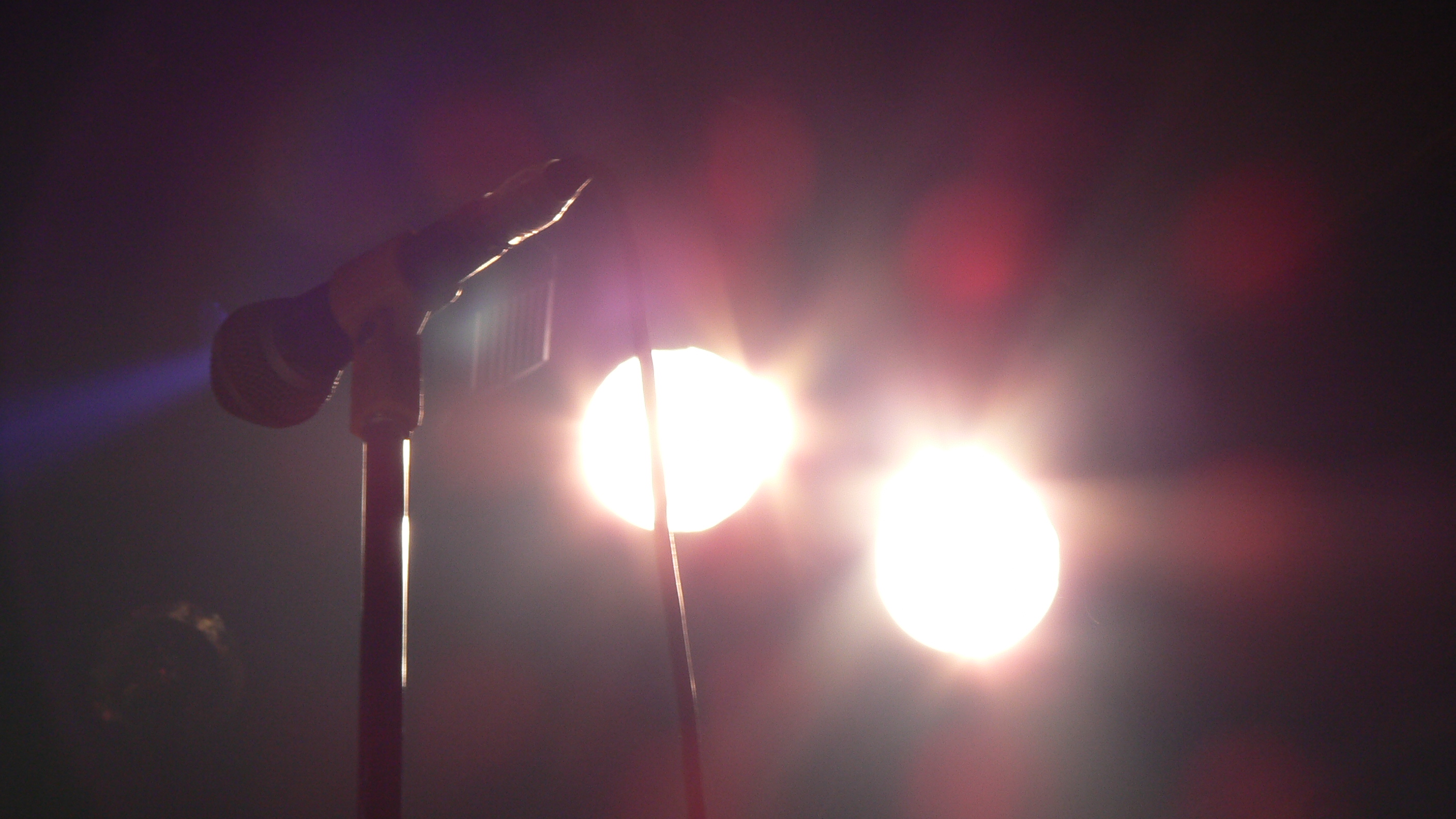
The room is a hot squeeze: words bounce and echo with the clank of mugs, the hiss of steam, the scrape of chairs. On the walls, there is artwork for sale, nailed against galvanized metal sheets or perched on wooden shelves. Behind the counter, a chalkboard menu. This is the kind of coffeehouse that serves organic foods and homemade pies, that hangs up rotating artwork and anti-racism signs. Nestled between a grimy convenience store and a tattoo parlor in central Tucson, its most frequent customers by day seem to be students and professors from the university, or people who make soap to sell at farmers’ markets, or tattooed elites. Once a month, it stays open for this poetry slam, which is regularly packed with high school students from all over southern Arizona, their families, teachers, passersby.
I got here early, and I’m sitting in a corner. I’ve got paper, but I am not, like so many of the young people around me, scribbling inspired lines of poetry or working thumb pads overtime on my phone. Instead of spinning out poems, I am drawing details – the mood, what poets say to each other, what they slam about, how they respond to their scores. I’m writing a dissertation about these poets. It’s a study of youth discourse, art, and activism, and I argue for the poets’ use of rhetorical strategies as suggestive of a specific kind of youth coalition. It’s hard for me to write such words, to work my mouth and ear around academic terms, but this is what I try to do now.
The first time I came to this poetry slam, I didn’t listen. I looked for craft. Pristine lines. I had the MFA ear, so precious. I did not want to hear explicit teen angst. I was with my friend, a writer who is working on a mystery novel. She is a PhD student with three children who supports her family on her own, and she runs at least a dozen miles every morning so she needs to eat constantly – she totes cartons of blueberries and bags of spinach, bagels and nuts.
We are both researchers on a grant that is funding work with local youth organizations, and this poetry slam is one of them. Our interdisciplinary research collective meets in a building on campus that is far from my English department home. This is how far: I was shocked when someone suggested that I could ask for undergraduate help in transcribing and coding my research data, and then I got access to a bright, clean room with a refrigerator where I could place my lunch without admonishment from tenured faculty. In this research collective, we talk about the problems and activism of marginalized Tucson youth who have suffered from increasingly restrictive policies in Arizona, such as the ethnic studies bill, the parents’ bill of rights, and the anti-immigration law. We sit in clean white rooms with bright lights and melodramatic air conditioning and expensive technology. We sit, and we try to figure out how this room squares with all the other spaces of Tucson.
This doesn’t tell you what I am trying to tell you, which is that my friend hears what is beautiful about this space long before I do. That first time, she, also, has brought paper, but, while I listen for gems, she hears the pulse. She nods and furiously writes, transcribing as many lines as she can. We squabble over awarding points because we have been asked to judge. Before the slam, we were handed a binder with scorecards numbering 1-10. At poetry slams, judges are chosen randomly from the audience, and no one is assumed to be an all-knowing critic. Or, everyone is an all-knowing critic because poetry is supposed to be public. After each poem, my friend clutches her heart and wants to give everyone 10’s. I wrinkle my nose frequently and insist upon a lower score, but no lower than 8.5 or we’ll get a big boo from the room. Sometimes she tosses up a 10 before I can object.
The problem with me is that I cannot yet bring myself to be generous, to love what is happening here. Writing has become a cool endeavor. For years, it has been difficult for me to look at my writing, at others’ writing, and be moved. This is not meant to be a quotidian lament about MFA programs, or the “workshop story,” or whatever else is, of late, a concern in creative writing. It is meant to suggest a simple question: how can writing move you (me), again?
Long ago, a New York Times columnist came to my MFA program, read one of my essays, and informed me I could not write a sentence. His pencil crawled over every line. I had felt that my essay was poetic. It had no meaning, no direction, sure, but it was a vivid narrative with comets and cornfields and a school field trip to the planetarium. Look how I’m undermining it. And the way I bowed to that creeping pencil. The way I agreed. The way I said it didn’t bother me while other students were weeping (he had done the same to all of us chosen to work with him). The way I thought my first publication worked because my favorite professor told me it was Chekhovian, and how that was the reason I figured I would submit it somewhere. The way I fool with myself. The way I can shrug at writing I’ve spent days, or years, producing. The way I learned to pause, to sip the sentence, close my eyes, approve of its warmth. And then the way the sipping could dismiss.
A poetry slam is not for sipping. You have to chug. It took a few slams for me to begin to learn how to listen, to be open to what moves these youth poets. There’s as much posturing in professional slam as in “literary” work, but this local slam is a different space. There are so many lines here, less the kind of lines that split than the lines that flow, a river of lines, a cacophony of lines, a supernova. Lines about racial tropes, familial bonds, the ideologies of citizenry, the notion of other. Lines tracing what it means to listen, to be heard, seen, felt. Lines of what it means to be young, genderqueer, gay, brown, white, poor, suburban, defined, confused, certain. Lines that cross, squiggle out past straight, open up the possibility of multifaceted identities, temporal identifications, complex humans. They write these lines before the slam, during the pre-slam workshop, or as the slam unfolds, anticipating their turn, almost-but-not-quite getting cold feet. They come here to write, to listen. They text each other after poems they like, or poems that baffle them; they give each other post-performance hugs. It’s not like the poetry readings of literary treasure. It’s not about “mmmm” or “mmm-hmmm,” the sharp intake of breath at a precious line, the expected silence or pregnant pause that signals we all are wandering in our separate, wooded brains. These lines often call me to reconsider what it means to write and act. They write as if there were no time for anything else, as if their lives were not scrolls just beginning to unfurl.
Guest Post, Carolyn Lavender: Justifying Phoenix
Phoenix, Arizona is not a place that attracts serious artists the way New York City and Los Angeles do. Some might assume that artists who live there are not as serious as those who re-locate to the important art centers of the world. I admire the artists that make those moves, but at this point it doesn’t look like that will be me. Even though I am living and working in Phoenix, I am very serious about what I do. All the artists I know here are. One of the best reasons for living in Phoenix is that it costs less to do so, and that means more time in my studio. A lot of creative people believe that it is okay to live somewhere like Phoenix as long as you travel. Traveling is interesting, people who travel become interesting, and then they can live in boring place but have interesting things to talk about.
Really, I am not bored when I am at home in Phoenix. There is more to do and experience than one ever could. But spending time somewhere else helps makes things vivid. My current house sitting opportunity in Brooklyn, for an artist friend, is allowing me to experience quality time in a major art capitol.
When I go to an old city I am thrilled by period decoration combined with the patina of age. Like the manhole cover in the basement of the contemporary art space, PS1, in Long Island City.
Also in PS1, is the always-magical Skyspace by artist James Turrell. Scottsdale Museum of Contemporary Art has one, but each Skyspace is an individual experience. On this day the clouds are smiling at me.
Inside the American Natural History Museum there are endless dioramas. These dramatic taxidermy scenes, that blend real and fake, can be found in lots of museums. But in this museum, there are more, and they are grander. This detail shows a leopard with his peacock kill.
Something I always notice, are mound-like forms, which some very old buildings have at their edges. Usually they are situated on corners, where I assume they are meant to provide protection to the building. This one I found in an alley in the lower east side of NYC.
My last image is a small object that I photographed at The Cloisters, a museum created in the 1930’s by John D. Rockefeller Jr. consisting of re-assembled parts of 5 different cloistered European abbeys. This object is one of approximately 5,000 medieval works of art that is contained within The Cloisters. I have been to this museum before, but on this visit I especially love this object. It is strange and wonderful, but there wasn’t much information with it. It reminds me a little of The Garden of Earthly Delights, the painting in Madrid, that I have been lucky enough to see in person as well.
So I will soon return to Phoenix to continue teaching and making art. And the next time someone asks me, I will be able to say that I recently traveled somewhere important. Which might just justify that I am a serious artist living in Phoenix, Arizona.
Guest Blog Post, Matthew Gavin Frank: Memories of Arizona as Filtered Through Some Theories on the Sonoran Hot Dog
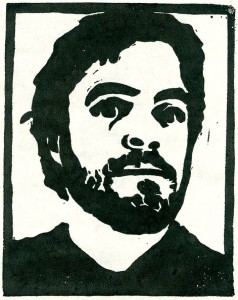 I’ve been thinking about spice. As vine, as flower. As catastrophe in the mouth. As some kind of biological confusion. The duping of the blood, the forcing of it to the tops of us. The feeling faint, the feeling amorous. The disintegration of the tongue, even though it’s all we can do to keep from kissing anything that moves. Even the Kokopelli tablecloth in our dining room. The window’s open. It’s unseasonably warm. I had too much red chile sauce on my Sonoran Hot Dog this morning.
I’ve been thinking about spice. As vine, as flower. As catastrophe in the mouth. As some kind of biological confusion. The duping of the blood, the forcing of it to the tops of us. The feeling faint, the feeling amorous. The disintegration of the tongue, even though it’s all we can do to keep from kissing anything that moves. Even the Kokopelli tablecloth in our dining room. The window’s open. It’s unseasonably warm. I had too much red chile sauce on my Sonoran Hot Dog this morning.
*
This is Arizona and the saguaros are wilting; Arizona, where the hot dog shuns the boiling, demands the comal. In this: 30 horrible jokes about how it’s a dry heat.
*
Here, in the Sonoran Hot Dog, everything assimilates: cotija cheese to onion, red chile to mayonnaise, tomatillo to tomato. This is what we tell ourselves.
*
In Hermosillo, the Yaqui Indians dance dances named after the coyote. In Phoenix, we allow even our hot dogs to hurt us.
*
There’s a hunchbacked flute player on my tablecloth, playing to my fertility. I wonder what this has to do with my longing for ketchup and mustard.
*
I’m keeping from kissing the tablecloth. From taking it into my mouth. Tablecloth as spice blotter, as shroud. As if, post-spice, the tongue is grieving. Sonoran hot dog as a blurring of borders. As both brain and heart. As American as manzana pie. As the pig graffiti’d in chili-cheese. I will say nothing of the encased, or defaced. It’s too hot to speak about the heat.
*
In Hermosillo, you can top your Sonoran Hot Dog with pineapple, with avocado, with chorizo, with poblano crema. In Arizona, you can perfume your neck with saguaro flower essence, in order to, according to Sonoran Alchemy (Let the Essence of the Desolate Uncover the Essence of You ™), “balance your masculine and feminine attributes… help in working through power struggles with parental or authority figures… and, like a true father, help us see how we can help ourselves,” while you eat your Sonoran Hot Dog.
*
I help myself to too much red chile. You blow hot air over my nape. If you blow hot air over my nape, why do I shiver?
*
The Sonoran Hot Dog as all confusions of the body.
*
The tongue as false father, the Sonoran Hot Dog as sexually confused. The saguaro is braced to praise or punish, hands on its hips, hands in the air. It calls penis, penis, penis through the window. I’m not sure if this is ridicule, or advice.
*
My mouth hurts. I want to kiss. It’s hot, and I’m in the Sonoran, and there are no yellow leaves here, nothing to remind me of ketchup, mustard, any less spicy sauce. If there were yellow leaves here, every yellow leaf but three would have fallen from the maple in the backyard. This big-ass eyelet of yellow on the lawn, the tree itself the stick jammed into the iris—precisely the shit they warned us about at recess all those years ago, back when I lived in the Midwest. Ronald Jarrell lost an eye that year. Lucio Aguilar too. Mr. Basofin, the principal, that winter banned snowball fighting. We all stood around, whistling, holding our snow. Hot dogs holding their mysteries in the casing, the chile confusing the mouth—mystery eats mystery. I can’t make sense of these things. Can’t tell how blindness informs assimilation. Can’t tell what depth perception has to do with the Sonoran Hot Dog—the eating of it from the top down. And: Open windows, yellow leaves, a little rain, spice? The maple is a cactus. The snow, red dust. And lawn?! If it rains here, we have to double up on the most surprised of our vowels. The hot dog is meant to be eaten horizontally, you tell me, but I’m not sure how you know this. But we know this: When it rains here, we call it monsoon.
*
The heat outside as authority figure, as sheriff. The heat in my mouth as my true father. Outside, the brush dances in the wind, and some wild canine tears the throat of the javelina. Moaning pigs communing with other moaning pigs. Each moving closer to the bun.
*
The brush as lit from the inside. The lovely creosote as creosote burning.
*
The Sonoran Hot Dog as stereotype made dangerous. As the sort of communion that makes us scream before accepting…
*
Hydrochlorofluorocarbons dripping from the walls like malarial perspiration, we eat our dressed-up hot dogs in the shuddering, weakening A/C. The spice beats in our temples like a machine gun.
*
In spice, a confusion of identity. How, when the sun burns us, we feel cold.
*
Here, in this kind of heat—no trees—even the hot dog needs a costume.
*
The hot dog as inappropriate chills, as trying so hard to contain its violence. As a racist sheriff in need of window-dressing. As a demand for papers. As tortured criminal, red chile sauce as his monster mask.
*
In the summer of 2005, Phoenix decided to ice its 120-degree cake with a pair of simultaneously-operating serial killers: The Baseline Killer (or Baseline Rapist, so named for his prowling of Baseline Road, who escalated his criminal activity from robbing at gunpoint a Little Caesar’s Pizzeria to murder, and who disguised himself in a Frankenstein mask, or as a homeless man, and raped his targets before shooting them in the head) and the Serial Sniper (or Serial Shooter—who later turned out to be two men, or shooters—who began blowing away dogs and horses before going randomly after human pedestrians, especially those on bicycles, a vehicle which, at the time, served as my primary mode of transportation to and from work at Arizona State University). My wife would wring her hands until I came home from talking with other nerds in a cinderblock classroom about the poetics of space. The entire city was gripped in this fist of fear, this cult of anxiety about setting foot outdoors into the be-pricked and be-bulletted heatwave, the communion with Son of Sam a pale conferva indeed.
*
The spice shooting the hot dogs from our mouths. This landscape of sand as a neat trick. Indeed.
*
Now, I can’t tell if it’s the spice that invades the hot dog, or the hot dog that invades the spice. Can’t tell creosote from algae, the plant from the meat.
*
Now, I can’t tell if it’s the spice that’s the flower/vine, or the hot dog. Which has the longer stem. In what part of us, it is planted.
*
Here, the kudzu uses other plants as its grow-base in order to invest the least amount of energy in reaching the sunlight. Here, the kudzu is known as an “invasive exotic.”
*
Here, for the light, the plants mask themselves in other plants. Here, too much light yields the burning, and the burning begins with the smoke.
*
Mascara means “mask,” or, literally, “more face.” During early carnivals, behind a mask, one could be who one wanted, do anything one wanted (from illicit sexual escapades to murder), and would not be held liable. In the mask, is the pardon.
*
The Sonoron Hot Dog is not liable for its spice.
*
Disguise means “off-style.” Costume means “custom.” These are meant to be opposites. Linguistically-speaking, we mask our costumes in disguises.
*
Something outside of our window is burning. On your breath, something so much more than the hot dog. You’re hot, and confused, so you pull the blanket around you. In this is confused theory, and a spicy mouth craves the sort of water that will not cool it down.
*
The bun as more efficient cooling tool. Your breath as inadequate to uprooting the saguaro.
*
Camouflage means “puff of smoke” or “to blow smoke in someone’s face.” No one knows where Sonora comes from. Its origins are merely theoretical. Some feel it’s the Yaqui pronunciation of señora (in response to an image of Nuestra Señora de las Angustias, or Our Lady of Anguish). Others feel it’s a Spanish mispronunciation of the Yaqui term sonot, or natural water well. Like Water to Anguish, each theory is inadequate to the other.
*
In home, in home, in home is ownership. In ownership, an assertion of dominance. Dominance sweet dominance.
*
So, we dig beneath the toppings to find a sense of home, the home being closest to the bread. The bread as tablecloth as spice blotter as the soaking of one thing into another thing. The awful stain into the purity of the napkin. This is also what we tell ourselves. The home as the familiar hot dog, the familiar as the familial, the home as the thing we, be-masked, stole for ourselves. Words like destiny and birthright confused as whether to be the blotter or the blotted, the costumes, or the disguises.
*
So, we praise, we punish, we rise like the vines:
At the Phoenix Wells Fargo, I fill out a deposit slip for $165.00. A young mother in a green neoprene kerchief (Dragonfly Salon is just around the corner) walks up the six steps from Home Mortgage into the bank lobby. She’s out of sight of the tellers, and the personal bankers, as usual, are away from their desks. She drags her daughter, seven-years-old at the most, by the sleeve of the girl’s pink windbreaker. The girl’s hood is up. It’s 114-degrees outside and the little girl’s hood is up. Tendrils of blonde hair snake from beneath it. By the way they hold their mouths, I can tell they’ve had an argument—the little girl acting up in front of the loan officer. A pink mylar foil balloon—a gecko—is tied to the girl’s right wrist with a length of scrolled green ribbon. The mother carries an obese white purse, stops at the landing. The tellers can’t see her. I sign my deposit slip and stand where I am. The mother opens her purse and removes a wooden pepper mill as long as my forearm. The little girl knows, frowns. She lifts her chin, sticks out her tongue. The mother raises the bottom of the pepper mill to the girl’s mouth, completes eight twists and the eight twists of ground pepper collect into a pile on the girl’s tongue. The girl closes her mouth, tightens her lips. Is silent. The deposit slip is getting wet in my palm. The ink is beginning to run. Mother and daughter walk to an open teller window, and the mother chats to the teller—a young man in a white shirt, red tie—about the heat. They laugh. The daughter is too short to see the teller. The teller sees the mother standing next to the gecko. The daughter’s face becomes more and more red. Her eyes close. She says nothing. Makes no sound. No cough or sneeze. Not a whimper. Her feet begin to dance on the tile as if she has to go to the bathroom. The sleeves of her windbreaker swish so quietly against the torso, as if shushing all of us. The gecko begins to shake. After four minutes, the mother yanks the daughter, still tight-lipped, by the arm. I imagine the popping sound of her shoulder dislocating, a half-dollar of bone jumping from the pink collar. The balloon failing. The pain and its wonderful release. The spitting of the pepper. The scream. They open the door to the sidewalk. Silent. The weather storms inside. Defeats the A/C. They turn the corner. I watch a lone Fry’s shopping cart push itself up the street. I’ve never been good at these things. At divining the rubric necessary to decide what they are. I have trouble distinguishing the cacti from the redwoods. I’ve been lying again. I don’t live in Arizona anymore. Now, I live in Michigan. At my neck, I can’t tell if that’s your breath, or the desert, or the snow.
Arizona Commission on the Arts Launches Poet Laureate Nomination Process

PHOENIX (October 3, 2012). The Arizona Commission on the Arts, an agency of the State of Arizona, today launches the nomination process for the inaugural Arizona Poet Laureate.
At the start of the last legislative session, Arizona was one of only eight states without a poet laureate. The Arts Commission and the Arizona literary community worked in close partnership with State Senator Al Melvin during the Fiftieth Legislature’s second regular session, to put forth a bill establishing a poet laureate post for the State of Arizona. On May 11, 2012, Governor Jan Brewer signed SB1348 into law, and October marks the beginning of the nomination, review and selection process.
Jaime Dempsey, Deputy Director of the Arts Commission, said of the process, “It is our hope that the appointed Arizona Poet Laureate will champion the art of American poetry, inspire an emerging generation of literary artists, and educate Arizonans about poets and authors who have influenced our state through creative literary expression.”
The bill specifies that the appointed poet laureate will serve a term of two years; will offer public readings throughout the year, in both urban and rural communities in various regions of the state; and will pursue a major literary project over the course of the appointment term.
The Arizona Poet Laureate will be provided with an annual honorarium of $2,500 to offset travel and so that he/she is able to actively serve the broadest constituency of Arizonans, who live, learn and work in urban, rural and suburban areas of the state. The honorarium will be disbursed from the Arizona Poet Laureate Fund, which consists of private monies donated by individuals, organizations or businesses – raised by the Arts Commission and its statewide literary partners.
Interested parties may nominate themselves or others for the position of Arizona Poet Laureate through a process managed by the Arizona Commission on the Arts. The initial deadline for nominations is November 9, 2012. To review details and information regarding the nomination/application and selection process, visit http://www.azarts.gov/azpoetlaureate.
“We would like to recognize and thank Arizona Senator Al Melvin, who introduced the bill and shepherded it through the legislative process, and to our partners in arts advocacy, the Arizona Citizens for the Arts for helping to see this bill through to success,” said Bob Booker, Executive Director.
Read the bill here.
About the Arizona Commission on the Arts
One of 56 state and jurisdictional arts agencies across the United States, the Arizona Commission on the Arts is an agency of the State of Arizona that supports a statewide arts network. The Arizona Commission on the Arts supports access to quality arts and arts education opportunities for all Arizona citizens; the development and retention of statewide jobs in the nonprofit arts, culture and education sectors; and increased economic impact in local communities through arts-based partnerships that develop tax and small business revenue.
For more information about the grants, services and programs of the Arizona Commission on the Arts, visit www.azarts.gov.
We imagine an Arizona where everyone can participate in and experience the arts.
Edna Dapo, A Solo Exhibition on View at the Phoenix Center for the Arts 10/5 -10/26/2012
 Edna Dapo is an international artist who resides in Scottsdale, AZ. She has been painting for 20 years and has won numerous awards. Her work has been selected for NEW AMERICAN PAINTINGS, Volume 70, and is on the cover of American Art Collector (CA, V4 B2).
Edna Dapo is an international artist who resides in Scottsdale, AZ. She has been painting for 20 years and has won numerous awards. Her work has been selected for NEW AMERICAN PAINTINGS, Volume 70, and is on the cover of American Art Collector (CA, V4 B2).Dapo holds an MFA in Painting from Savannah College of Art and Design, BFA in Painting from ASU, and a diploma from Art School Luka Sorkocevic in Dubrovnik, Croatia.She is a Department Head of Painting & Drawing at the Phoenix Center for the Arts, and also teaches drawing and life drawing at Mesa Community College.
